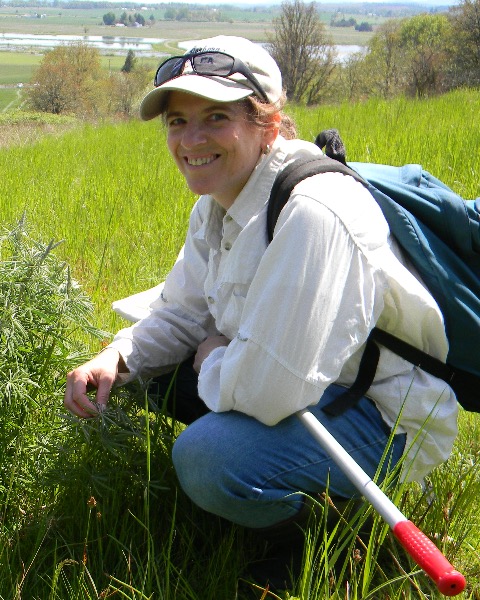Back
Plant-Insect Ecosystems
10-Minute Paper
P-IE: Conservation
Can cattle grazing contribute to butterfly habitat? Using butterfly behavior as an index of habitat quality in an agroecosystem
Wednesday, November 16, 2022
1:54 PM – 2:06 PM PT
Location: Vancouver Convention Centre, Meeting Room 212
- SB
Samantha Bussan
PhD Candidate
Washington State University
Vancouver, Washington 
Cheryl B. Schultz
Professor
Washington State University
Vancouver, Washington
Presenting Author(s)
Co-Author(s)
Many native prairie butterfly species are highly at-risk due to habitat loss from agriculture. This study uses butterfly diffusion rates as an index of habitat quality under cattle grazing management. We conducted behavioral experiments with two native Washington butterflies (silvery blue butterflies (SBB) and ochre ringlets (OR)) in three different management types: ungrazed native prairies, “conventional grazing”, and “conservation” grazing. We hypothesized that diffusion rates would be lowest in native prairies and highest in conventional pastures because butterflies would move quickly through perceived low-quality habitat. We followed individuals to record flight paths and recorded vegetation characteristics along the paths. We calculated and compared butterfly diffusion rates to assess the effects of management and vegetation characteristics on perceived habitat quality.
We found that SBB diffusion rates differed by sex and management type. Female SBB diffusion rates were highest in conventional grazing, lowest in native prairie, and intermediate in conservation grazing. Male SBB diffusion rates did not differ by management type. Male OR diffusion rates also did not differ between management types. SBB diffusion rates were strongly associated with the amount of their preferred host plants present along their flight path. We did not observe an effect of nectar abundance or vegetation height on SBB diffusion rates.
We conclude conservation grazing has potential to add habitat value for butterflies in agricultural landscapes if their host plants are present. Grazing management should focus on promoting a diverse native plant community, especially host plants for focal species, while still providing forage for cattle.
We found that SBB diffusion rates differed by sex and management type. Female SBB diffusion rates were highest in conventional grazing, lowest in native prairie, and intermediate in conservation grazing. Male SBB diffusion rates did not differ by management type. Male OR diffusion rates also did not differ between management types. SBB diffusion rates were strongly associated with the amount of their preferred host plants present along their flight path. We did not observe an effect of nectar abundance or vegetation height on SBB diffusion rates.
We conclude conservation grazing has potential to add habitat value for butterflies in agricultural landscapes if their host plants are present. Grazing management should focus on promoting a diverse native plant community, especially host plants for focal species, while still providing forage for cattle.

